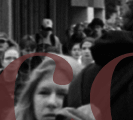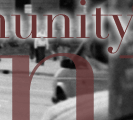 |
||||
      |
||||
|
Bridging the gap Almost every night I find my roommate Nicole poring over a large paperback book. Every once in awhile she’ll look up and ask me a question like, “Have you heard of Eastern Virginia Medical School?” Sometimes she’ll stumble out of her room with bleary eyes and a medical school application essay in hand and ask me to proofread it. I have seen her buckle down for the MCAT and every other physics, chemistry and biology exam that has been part of her preparatory coursework. She’s preparing for a career in the medical field, which can be a difficult journey requiring discipline and guidance. As a white woman; however, she has the benefit of many women who have gone before her, mentors and advisers to direct her as she pursues her goal. Not all students have the benefit of a multiplicity of mentors like Nicole does. Walk into a hospital or read a scientific journal. How many of the names belong to an American Indian man or woman? Very few. About six years ago American Indian and Alaskan native research scientists recognized a gap in research training and acknowledged the need to facilitate education for interested American Indian students. As a result, the Native American Research Center for Health (NARCH) was launched at 11 sites around the country, including a Wisconsin branch, the Great Lakes NARCH. The Great Lakes NARCH and the Great Lakes Inter-Tribal Council (GLITC), headquartered in the northwoods village of Lac du Flambeau, teamed up with six other regional medical and educational institutions to respond to the need for educational development. These institutions collaboratively created the innovative Student Development Program, a student program that aims to create opportunities for more American Indians in science and medicine by providing hands-on experience for students to explore opportunities in these fields. Efforts include providing guidance to students throughout their educational careers and offering opportunities for training in health care issues affecting American Indians. Equipped with specialized education and experience, these students may be a unique resource to their tribes and communities in the future. This goal is pursued in three phases: high school advising and youth conferences, research opportunities for college students at the American Indian Science Scholars Program and focused internships. The first step of this program focuses on information and advising, suggesting pathways for students to explore. American Indian or Alaskan native students ages 14 to 17 interested in science and medicine can find out which courses and exams will prepare them for college. NARCH also offers a one-week Wisconsin Indian Youth Conference (WIYC) in collaboration with one of their partner institutions, UW-Stevens Point. UW-Stevens Point has planned this conference for the last 15 years to serve the tribal community. The WIYC presents a wide variety of experiences for students to explore scientific fields before college. Sharon Cloud, director of UW-Stevens Point Native American Center and conference coordinator, says the unique structure of the conference borrows from both American Indian tradition and modern methods. “The afternoon sessions with elders tend to bring out the old ways in reference to discipline, respect and other issues. The regular classroom activities reinforce what the students see in school or can expect in college.” While designed to be an academic resource, the conference goes well beyond the classroom. Throughout the conference students participate in fitness instruction, multicultural lectures, social mixers, college admissions presentations and campus tours. Storytelling from tribal elders, discussions on American Indian history and culture and academic advising are also part of the program. The goal is to blend a balance of values from two cultures. |
||
| interactive map of Student Development Program partner institutions | |||
|
|||
|
|||
